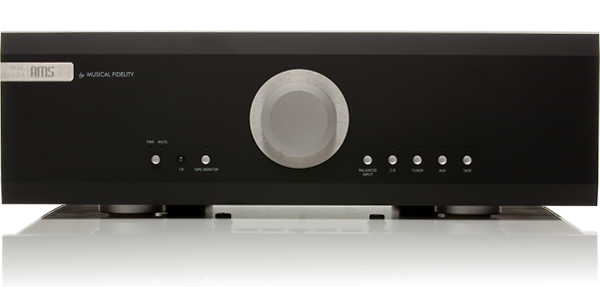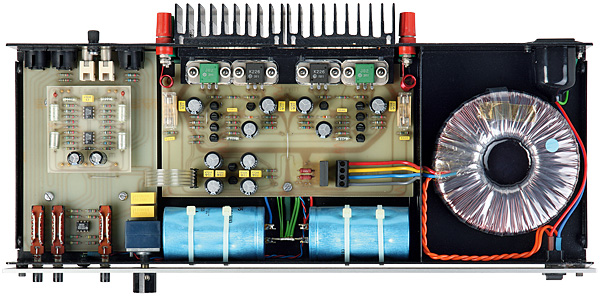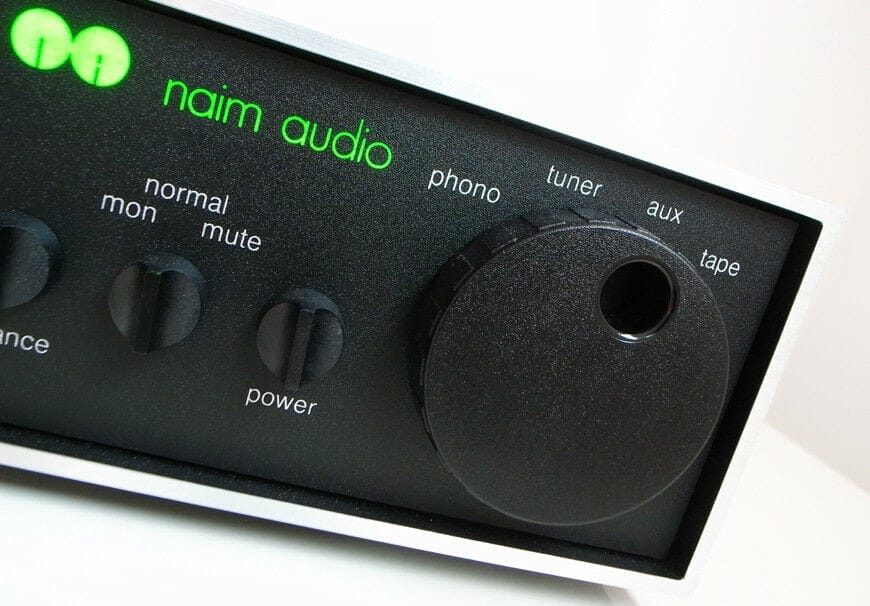When you hear “Made in Japan,” you immediately think of large corporate consumer electronics giants like Sony and Matsushita. Few people realize that, exactly because the Japanese home hi-fi market is so large, there’s opportunity for a thriving set of specialist manufacturers producing devices that are vastly different from your average Yamaha AV receiver…
This is what the Leben Hi-Fi Stereo Company is all about. This company, like Ikeda or Koetsu, is small, hugely specialized, and off on a tangent compared to practically everyone else. Taku Hyodo (creator, designer, and owner) is modestly listed on the website as “one of Japan’s top eight tube audio design engineers,” no less! This is due to the fact that he is an ex-Luxman. Lux is another manufacturer with a strong reputation in Japan for audiophile excellence, as well as the maker of a couple of cool tube amplifiers. He’s also a brilliant musician who used to be a professional guitarist, according to his bio. In case you were wondering, Leben means “alive” in German.
In 1979, at the age of thirty, he quit Luxman and founded the Kouri Denki Company, which manufactures electronic components and parts. Hyodo-first san’s commercial product, the KFH Triode 33 (using 3C33 tubes), was released in 1991, followed by the Leben RS-35a (using 6L6GCs) in 1995, and the RS-28c preamplifier (using E288CCs) in 1998. These are all cult products, so much so that a fan club (the Leben Audio Lovers’ Club) exists in Japan! The CS-250 and CS660P power amplifiers, as well as the CS-300 integrated and CS600 preamp, are now more inexpensive.
The CS300XS Limited was a special version of the ordinary £1,600 CS300, which was a 12 Watt integrated amplifier employing EL84 tubes in a basic point-to-point wired, self-biasing push-pull circuit, with in-house built transformers, presented in a charmingly nostalgic box with wooden side panels in 2007. The Limited Edition was essentially a no-budget re-build of the original amp using rare new old stock Mullard EL84s.
If you’re expecting a gigantic high-end Denon-style design, forget it – the CS300 is fairly modest, resembling a Leak Stereo 70 at 360x140x270mm. This isn’t to imply it’s light; at 10kg, it’s as heavy as a gold bar. The build quality is exceptional – clearly handcrafted rather than mass-produced, the polish is flawless, and the golden anodized fascia switches operate with Swiss watch precision. The bulky control knobs hint at its Japanese origins, reminding me of old Rotel receivers from the 1970s, but the rest of the switchgear is electronics parts catalogue fare, albeit of unquestionable quality, and the Canadian white ash wooden side panels are stunning.
A two-stage bass boost (+3dB and +5dB under 100Hz) and a headphone connector are two interesting features on the fascia (wired direct from the output transformers). When the valves are warmed up, a little ‘Operation’ lamp illuminates roughly twenty seconds after the switch is turned on. High-quality gold-plated phono sockets for five inputs, an IEC mains input, and four pairs of speaker binding posts, all of which accept thin bare wire, spades, and banana plugs, are arranged around the back. Then there’s a speaker impedance selector switch that lets you choose between four, six, or eight ohms.
It’s a sight for sore eyes on the inside. Four EL84s (NOS Mullards fitted to the CS300XS) and two General Electric 5751s (which Leben characterizes as “a premium version of the 12AX7A, also customized for the CS300XS”) are visible and in excellent condition, reminding me of a flawless Leak TL12. The related transformers are all engraved with Leben’s name, and the massive internal wiring is flawless. Precision industrial grade resistors, Sanyo ‘OS Condensor’ and ELNA Silmic capacitors, 4W high power cathode resistors, and Toshiba 3TH41 damping diodes are among the passive components installed. This small amplifier gets hot, but not as hot as you might anticipate.
Because the Leben is so unique, it’s difficult to evaluate it using typical criteria. It can only drive high sensitivity loudspeakers with only 8W RMS per channel, and the greater the better. My reference Monitor Audio PL100s (reported sensitivity 88dB) produced quite acceptable levels in my room, but for extra oomph, I switched to my pair of classic Mission 752s (91dB) in my larger listening room, where it sounded rather unstressed. Indeed, the phrase ‘unfettered’ would be a better fit, because when you listen to this little box, music comes out of the speakers in a carefree and lively manner. It’s a particularly spontaneous performer, making it appear as if all of the musicians in the studio are genuinely excited about the song as they lay down the track.
The CS300’s defining feature is its cheerful, energetic sound, but it’s not its sole distinguishing feature. Another thing that struck me while I played Freez’s Caribbean Winter’s acoustic jazz funk was its outstanding tone pallet. It doesn’t have the icy clear tonality of a Sugden A21SE – it’s definitely on the warm and smooth side – but it also doesn’t make every instrument sound uniformly warm and smooth. Pianos have rich resonances, brass has roughness, and cymbals have an uncanny metallic shine as a result of this. This is noteworthy, because the Leben accomplishes it so well that switching back to a transistor amplifier, or even most valve amplifiers, makes the music seem much more one-dimensional…
The strings of soloist Michel Schwalbe ringing with harmonics in a Deustche Grammophon pressing of Vivaldi’s Four Seasons (Karajan, Berlin Philharmonic) was a revelation, since generally what I hear is more like a monochrome Xerox of the same. The recording had a lot of space to it, but it felt quite immediate at the same time. If I had one criticism, it would be that the cellos lacked some body and didn’t have the physical presence I was hoping for.
Moving on to rock music proved this; Animal Nitrate by Suede was tonally too bright for my liking. The Leben dove right into the music, delivering its usual exuberant performance and imbuing the song with a strong sense of rush and velocity, but there was no bass weight. It’s a tad warm in the upper bass to compensate for its apparent lack of low-frequency punch, but a really low bass note isn’t the Leben’s top goal. It’s never going to give you barrel-chested physicality.
As a result, one must evaluate the Leben CS300XS on its own merits. After that, you’ll discover it to be an amazing integrated amplifier that outperforms practically anything at the price – its unrestricted, open, and musical character presents acoustic instrument tonality so naturally. However, it will never light up a set of low-sensitivity speakers, nor will it make even the simplest loads seem as loud as a public address system!







